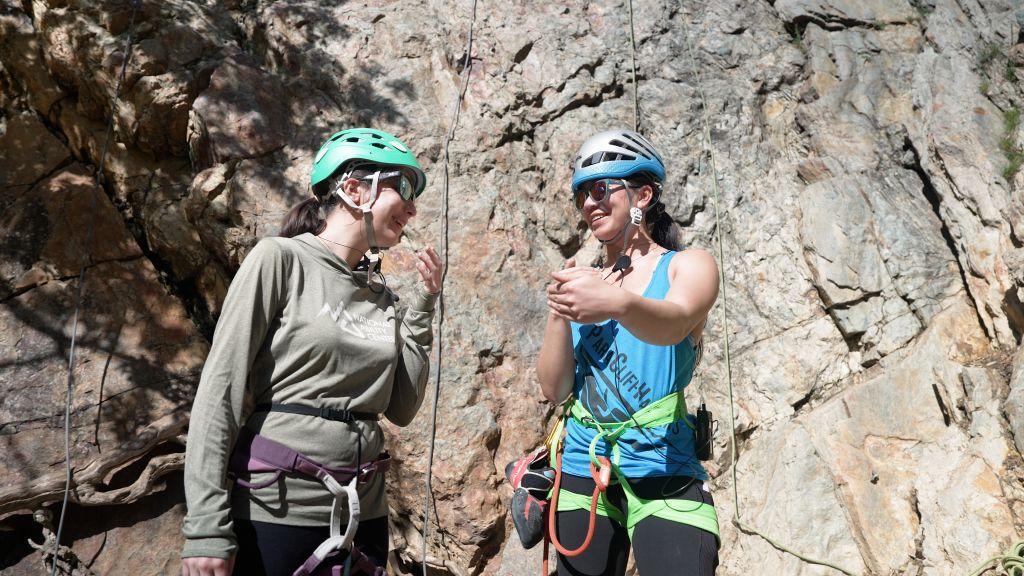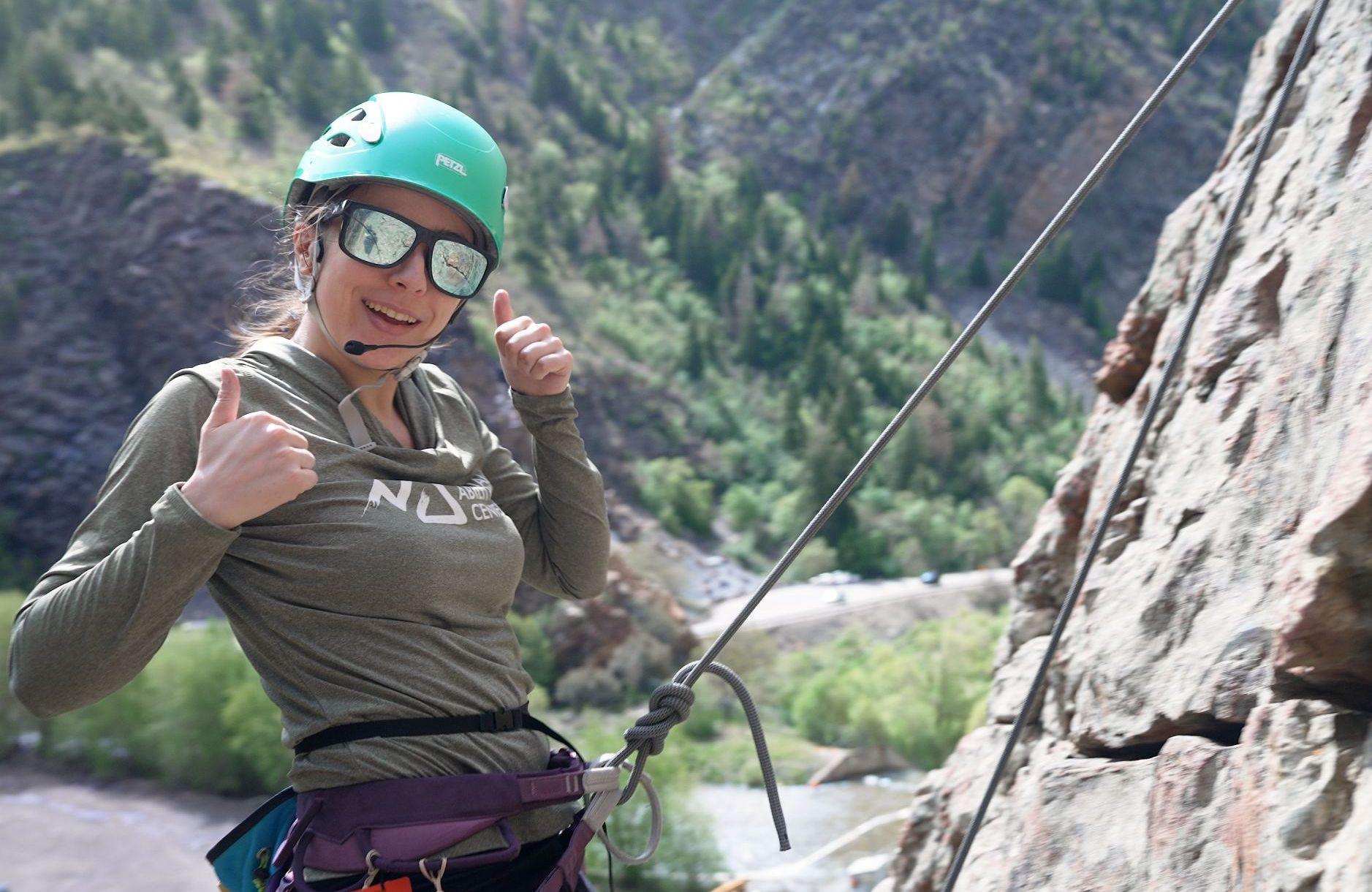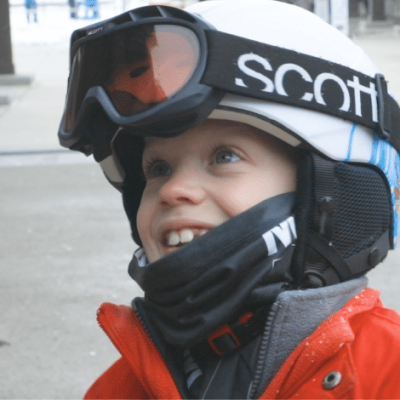You’ll never forget that amazing feeling when you discover that your body can do things you didn’t think it could. Climbing was that way for me.
Most people are surprised to learn that I’ve only been climbing for a little over a year. I still have vivid memories of my start; it was at an indoor facility in New York City. I expected to sit through a 45-minute training session, but I arrived, put on the harness, they tied me in, and told me to start climbing, guiding me along the way. I thought it would take a lot of strength and muscle, neither of which I had at the time, but I was surprised at how easy it was, even for me.
I never looked back.
Climbing is an inherently adaptive sport because all climbers, disabled or not, are united in our fight against gravity. So, it’s not surprising that as rock climbing has gained in popularity, a thriving adaptive climbing (or paraclimbing) community has grown alongside it. Whether blind, paralyzed, limb different, or anything in between, all types of disabled climbers can find joy in the challenge and community of paraclimbing.
Despite its popularity, information about the practicalities of climbing with a disability is still scarce. So let me explain how to climb as a blind person, with some tips and tricks I’ve learned along the way.
Step 1: Find a Caller
Most blind climbers use a caller, someone who stays on the ground to share information about the location of holds and description of the route.
Ideally, a caller has some personal climbing experience so they know how the climber will need to move. That said, anyone, regardless of their climbing skill, will need practice at calling. It takes a while for a caller to learn to give verbal directions; they also need to learn their paraclimber’s style, especially if they have a different wingspan. One thing that can help a beginner caller improve is to have them climb the route first, so they have an idea of the beta before they try calling it. And though it’s not always convenient, callers can even belay while calling if needed.
The good news is that anyone can be a caller with a little work and patience.
Step 2: Find Your Calling Style
This is individualized. Some blind people prefer clock directions, others like locations relative to body parts. I personally use a coordinated system loosely based on inches, in which my caller will say something like ‘left hand, left 15, up 2”. I say loosely because I am, in fact, not a ruler, and my callers must adapt to how I’m interpreting their distance. For instance, my callers will often learn to give me exaggerated distances as I get tired because I tend to undershoot.
In general, the information a climber needs before getting on the wall are the locations of the first handholds, first footholds, and second handholds. I typically stand on the ground while my caller either verbally directs my hands or physically guides my hands to all the holds within reach. Then, they describe the first move. This is important because most routes are set with very intentional first moves, and I will need to know where I’m going before I push off.
The other style peculiarity is related to low vision. Like roughly 80 percent of blind people, I have some residual sight, but I personally climb best with my eyes closed. For me, my sight can be deceptive, so I’m better off trusting my caller’s information rather than letting their directions compete with my own poor vision. However, some visually impaired people like to use their own sight as they climb. It all comes down to personal preference.
Step 3: Choose Your Technology
There are three ways a caller can communicate. The first is low-tech—shouting. The obvious cons include trouble hearing each other, difficulty for the blind climber to ask questions, and wearing out the caller’s voice. However, shouting is the fastest method of communication, the most reliable, and in some cases, the most effective. At world-level competitions, the champion Japanese blind climber Sho Aita is famous within the community for having his caller simply shout at him through a rolled-up sheet of paper.
The second method, which I use, relies on a simple phone setup. I wear standard Bluetooth headphones, and so does my caller, and we talk with each other by phone. This is certainly more subtle and sustainable for my caller’s voice, and it enables easy two-way communication between us. However, there is a definite delay between steps, and if a particular climbs requires speed, this can become a problem. We also experienced technical difficulties when I was halfway up a World Cup qualifying route in Switzerland and our phone call dropped. We switched to shouting and I still finished the route, but it was nerve-wracking!
Finally, a climber can invest in specialized sports headsets which connect directly with each other. This option provides both reliability and speed, but at a price. On the bright side, they could make an excellent gift.
Step 4: Recognize Indoor/Outdoor Advantages and Challenges
Blind climbing takes endurance and stability; it’s slower than non-blind climbing because each move needs to be made deliberately. This is especially true of indoor climbing, where routes are typically intertwined. This means that just feeling around on my own for my next hand- or foothold is not useful, because I could grab something that is not on my route.
Outdoor climbing can be more fluid since everything is considered on-route for outdoor walls. Some visually impaired climbers don’t even use a caller when climbing outdoors; they just feel around for usable holds. During my first time climbing outdoors, I felt a bit like Indiana Jones, discovering all the nooks and crannies.
Step 5: Learn to Let Go
It’s natural for a blind climber to want to start out climbing statically, meaning that they find each new hold before letting go of the previous one. I was in this camp. But dynamic movement, which involves more swinging and fluidity, is more energy efficient. As I began to tackle more difficult climbs, I realized that I was going to have to learn to become comfortable with the uneasy feeling of swinging for holds unknown.
This is where you learn to really trust your caller.
When my caller tells me I’m going to have to throw far up and to the right, I straighten my arms and push my weight into my feet, taking a second to shake out my arms in preparation. I repeat the coordinates of the hold to myself, imagining the movement I’m going to make. I know that I’m better off shooting a bit past the hold rather than below it, because it’s much easier to lower myself into a hold.
Next, I push off my legs, tightening my core and pulling hard on one arm while the other swings. The tighter I can keep my whole body, the more stable I will be and the more time I’ll have to search for the hold if I don’t land it directly. I pull one foot off the wall, helping me counterbalance. Then I quickly moving my weight back into my legs to take the strain off my arms. My caller directs me to the next foothold, and I move my feet, making sure to put the weight into my toes to increase the staying power of my stance. Trust me, it becomes easier with practice.
Climb On!
Whether you’re indoors or outdoors, any blind person can learn how to climb, and you can learn how to climb well. Climbing took me from being a bona fide couch-potato to a competitive athlete, with all the physical and mental benefits to match. On top of everything, the warm and encouraging paraclimbing community has brought me countless laughs and support along the way.
If there’s one thing I’ve learned, it’s that climbing is for everyone, including you!

Emeline Lakrout is a blind paraclimber on the U.S. National Team. She has competed both domestically and internationally, taking 5th place in the 2022 Switzerland IFSC Paraclimbing World Cup. When she’s not hanging on to a wall, she’s an avid disability rights advocate, working on projects ranging from legislation, to advancing disability inclusion in her consumer products marketing job, to content creation on her various social profiles. You can find her on Instagram @EmelineClimbs or on her blog at www.easiervision.wordpress.com.





